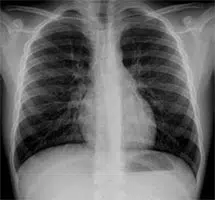 The etymology of dose refers to medieval Latin, although its origin is found in the Greek word dósis (which can be translated as the “act of giving” ). A serving or amount of something, whether material (physical) or immaterial (symbolic), is called a dose.
The etymology of dose refers to medieval Latin, although its origin is found in the Greek word dósis (which can be translated as the “act of giving” ). A serving or amount of something, whether material (physical) or immaterial (symbolic), is called a dose.
For example: “The film needs a dose of suspense” , “The government assured that vaccine doses are guaranteed for all patients” , “The police detained a person who was transporting two hundred doses of drugs ready to be marketed” .
The idea of dose can also be applied to the amount of medicine that is given to a patient at each dose . In the field of pharmacology, the dose refers specifically to the amount of active ingredient that a medication has in each supply.
The medication can be supplied in a single dose or in multiple doses . In the case of unit dosage, the remedy is administered to the patient in a single portion that is prepared in a container that cannot be used again.
The maximum tolerated dose is the amount of medication that a person can ingest or receive without serious side effects. If this dose is exceeded, the subject suffers an overdose . When the excessive dose causes death, it is classified as a lethal dose .
In the context of radiology, the dose is linked to the level of radiation that a living being receives. From the radiation, magnitudes such as the effective dose , the absorbed dose and the equivalent dose can be measured.
Radiology relies on the use of x-rays , a form of energy similar to radio and light waves that is also known simply as radiation . Something that distinguishes them from light waves is that they have enough energy to pass through the body, both the epidermis and the bones and tissues of the organs, and this allows radiologists to obtain images of the patient's interior without need to perform physical alterations such as surgery.
Professionals must measure the radiation dose that passes through the body using the unit called millisievert (mSv) , related to the concept of effective dose . There are other units for this measurement , such as the gray , the sievert , the rem , the rad and the roentgen .
 The effective dose refers to the risks that the patient runs when subjecting their body to radiation; Among the most common side effects is the likelihood of developing cancer. To calculate the effective dose, it is necessary to take into account the degree of sensitivity of each of the tissues that the radiation will pass through.
The effective dose refers to the risks that the patient runs when subjecting their body to radiation; Among the most common side effects is the likelihood of developing cancer. To calculate the effective dose, it is necessary to take into account the degree of sensitivity of each of the tissues that the radiation will pass through.
Doctors can evaluate and compare the risk posed by the effective dose with more common sources of exposure , such as natural background radiation , which represents what we receive naturally every day, which is why it varies depending on the geographic area in which we are exposed. let's meet According to some research, North American residents receive a dose of around 3 mSV each year from natural sources.
The higher the altitude , the higher the natural dose: in New Mexico and Colorado, for example, exposure adds an average of 1.5 mSv to the dose received by inhabitants of areas near sea level. Radon gas, present in our homes, constitutes the largest source of this type of radiation, since the annual dose reaches 2 mSv.
To compare the radiation dose from radiology with the natural background, we can say that a chest X-ray taken on an adult provides 0.1 mSv, which is equivalent to what would be obtained over ten days.
